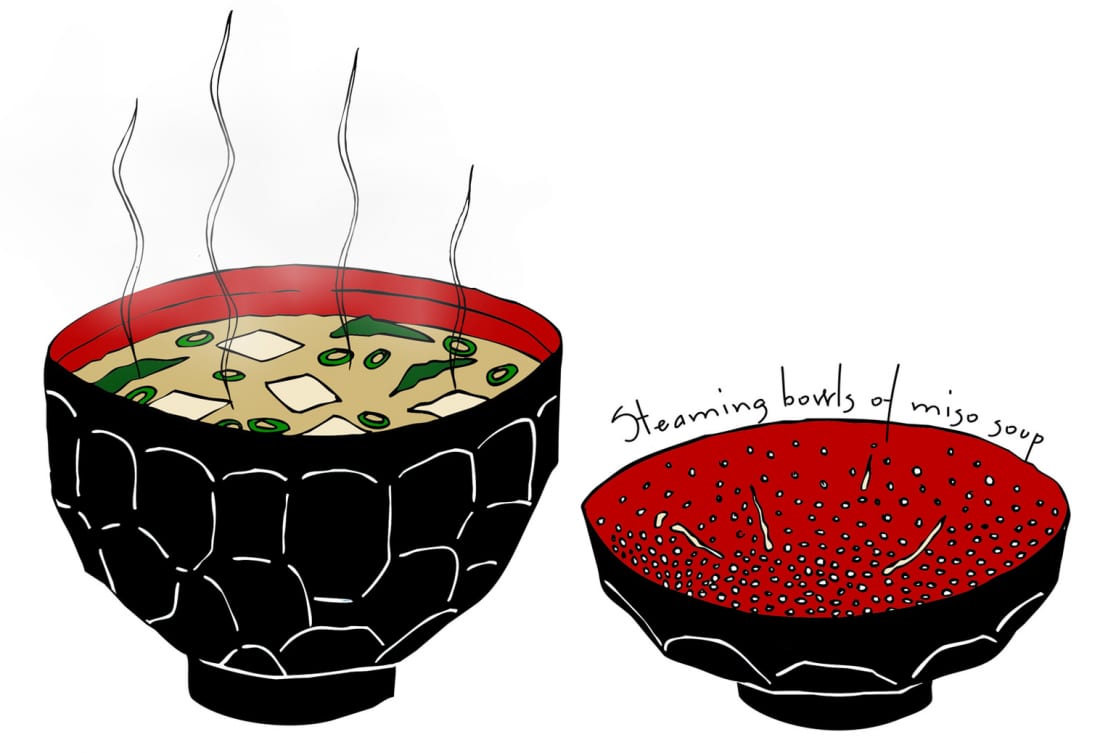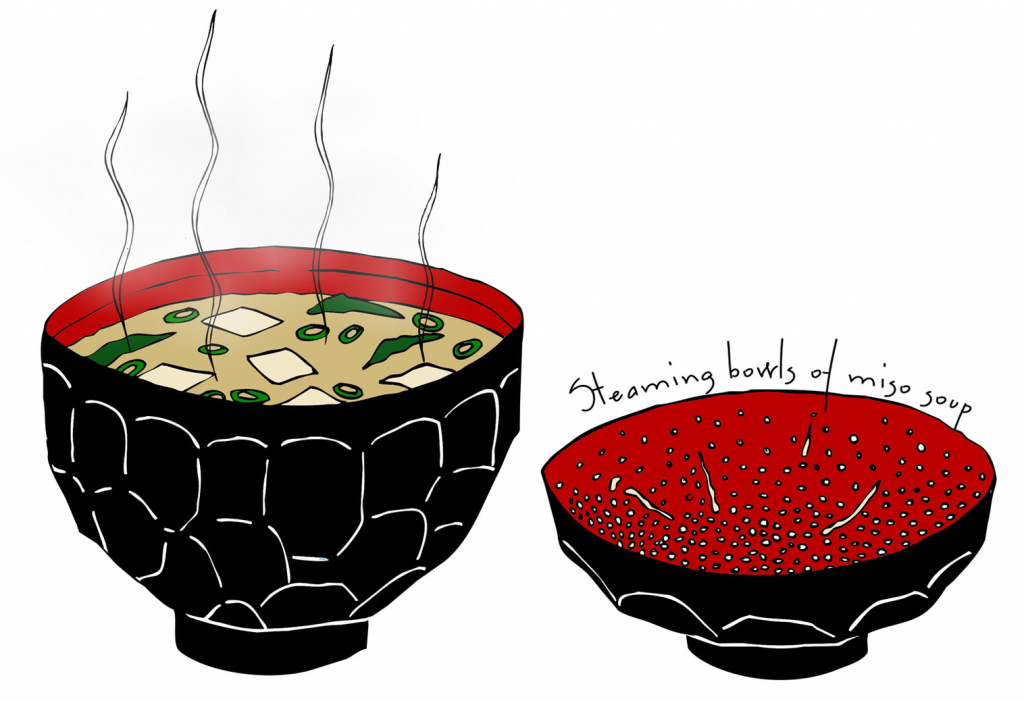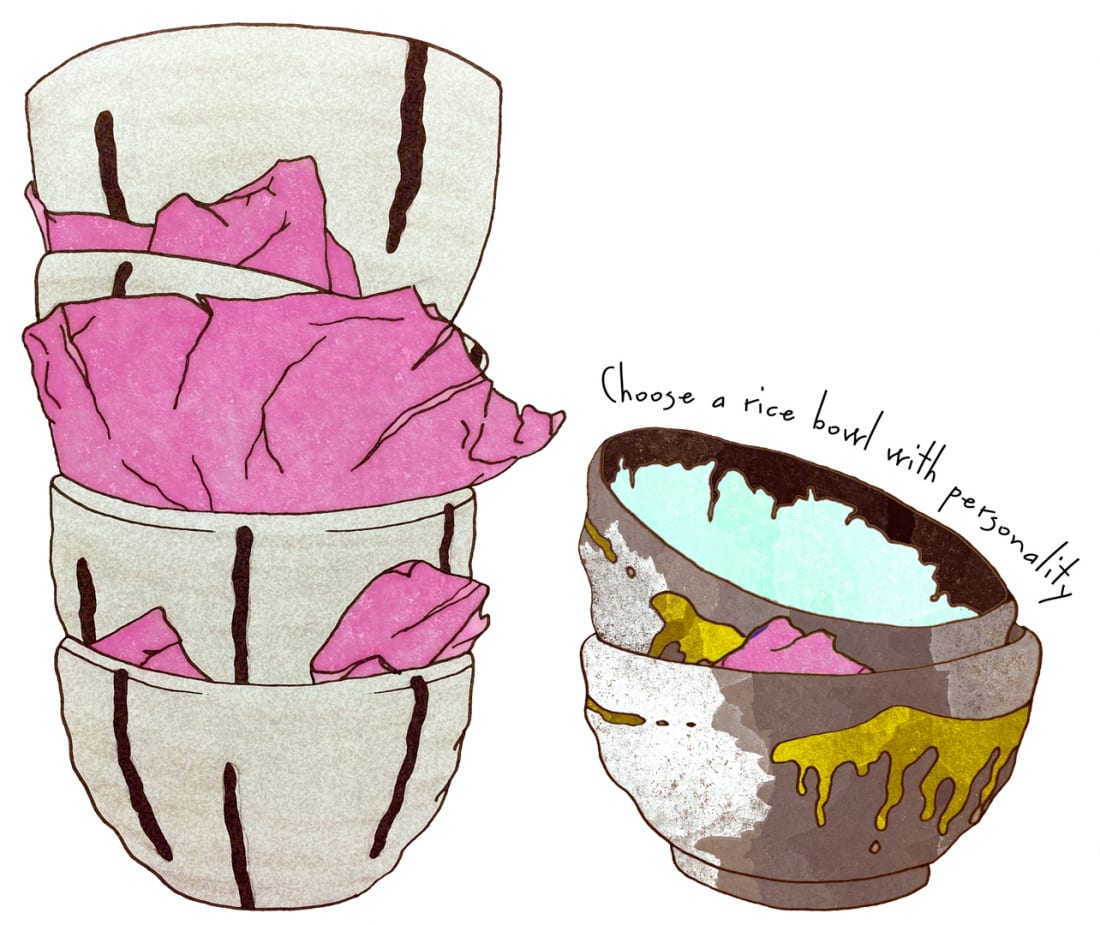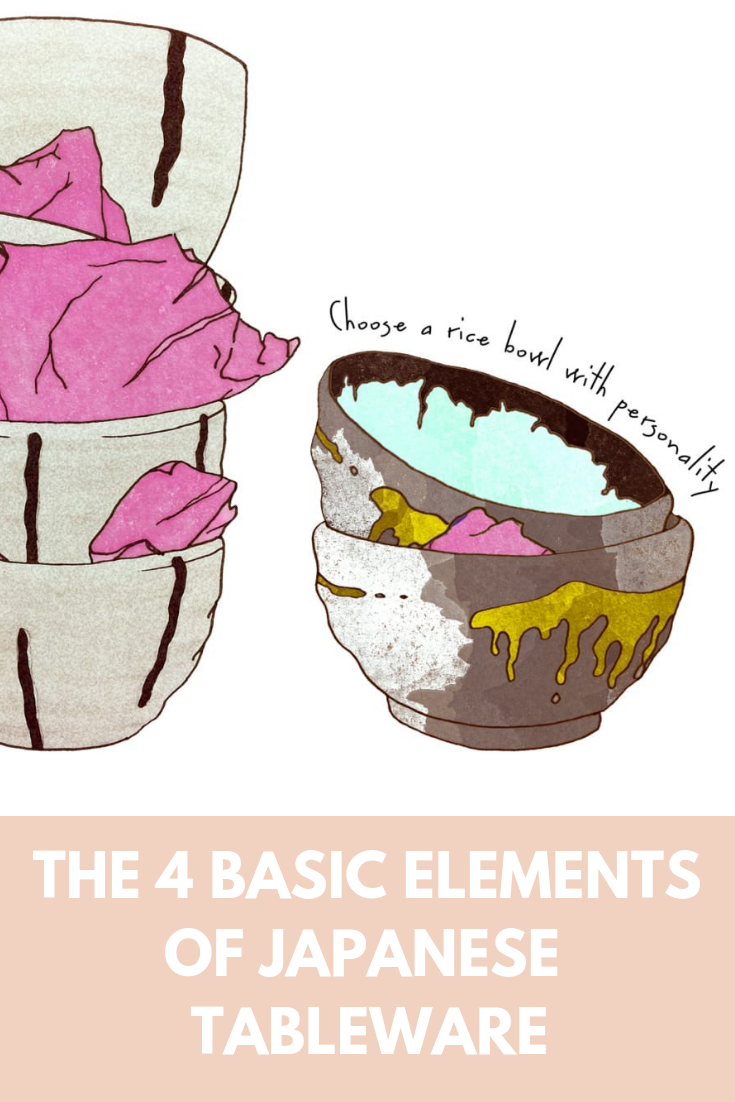Dining in Japan is a multi-sensory experience and the casual observer might not realize the importance tableware takes in setting the perfect meal.
Japan dining customs developed around eating with chopsticks. This has resulted in unique ways of interacting with food. Holding your plate while at a table in a European restaurant would be considered bad manners, however in Japan it is considered polite to hold your rice bowl closer to your body, to avoid dropping your food. Similarly, the Japanese custom of drinking soup directly from the bowl can also be credited to chopsticks.
What about the aesthetic differences? To understand the asymmetry of Japanese tableware we can look at a larger concept within Japanese culture – wabi-sabi. Wabi-sabi celebrates the imperfect and the weathered. It asks us to see these characteristics as valuable representations of the fragility of life. Wabi-sabi can be linked to Buddhism which teaches that wisdom is found through accepting the imperfect and transitory nature of life.
While Western tableware looks to find harmony through perfection and duplication, the traditional Japanese style celebrates mismatched and irregular pieces. Roughly formed ceramics, delicate porcelain and carved wood can be found together in a single Japanese dining set. While this can initially seem disjointed, every one of these pieces has been carefully considered and has a particular purpose.
The Japanese dining experience teaches us to turn around and look for the beauty that already exists in our imperfect realities.
Rice Bowls
Starting with the basics, most meals that involve more than one dish include a rice bowl, designed to be small enough to hold in just one hand. As well as serving your rice, this bowl gives you the opportunity to inject personality into your set.
Choices range from delicately painted porcelain to earthy ceramics that proudly show imperfections and the fingerprints of their makers. Instead of seeing the fingerprints as defects, we interpret them as adding character and value to the piece. It is a testimony to what the bowl has experienced and gives it a unique charm.
Given the popularity of rice within Japanese cooking it’s likely you’ll be using this bowl regularly, so it’s a good idea to choose one you’ll enjoy interacting with each day.

Soup Bowls
Next, we have the soup bowl. As miso soup is drunk directly from the bowl rather than with a spoon, it’s important for the bowl to be made from an insulating material such as wood. This allows you to pick up your hot broth and enjoy it without screaming for oven gloves.
These bowls often come with lids to keep the soup hot while you enjoy the other parts of the meal. This gives you the opportunity to extravagantly reveal your soup just before drinking and fully experience the steam and fragrances rise from your bowl.

Dishes
As many confused tourists can confirm, Japanese meals tend to come with an array of tiny plates and bowls, each holding pickles and sauces for dipping or pouring. While working out what to do with each one can be initially confusing, it becomes a whole lot easier when you realize the shape of the dish hints at what to do with the contents. Sauces to be poured are often served in a dish with an indent to pour from, while dipping sauces and pickles are presented in simple small dishes with uniform sides.

Chopstick Rests
No Japanese dining set would be complete without chopstick rests. Leaving chopsticks on the table between eating is considered unhygienic but this problem can be easily solved by the use of chopstick rests.
What’s more, this gives you another opportunity to add personality to your dining set as there are a huge variety of designs available, ranging from humorous cat characters to delicately painted porcelain. Chopstick rests are small and cheaply available so many people have a collection to choose from depending on the guests or season.
Where to Find Japanese Tableware
So where in Tokyo should you go to start building your own Japanese tableware set? Between Ueno and Asakusa you’ll find Kappabashi Street – a long road lined with shops selling everything you can imagine for the kitchen. Here you’ll find beautiful tableware, professional cooking equipment, specialty ingredients and even the plastic food that’s on display in restaurant windows. It is worth visiting the shops Den-Gama, Komatsuya or Fujita Shoji in Kappabashi where you’ll find huge ranges of Japanese tableware.
While it’s a great place to go shopping, Kappabashi also offers a unique exploration of Japanese culture, and has plenty of hidden treasures. Because of this, you might want to dedicate a few hours to exploring this fascinating area dedicated to one of Japan’s most revered traditions.
Illustrations by Eleanor Jane Hall
Updated On April 26, 2021



 E
E






